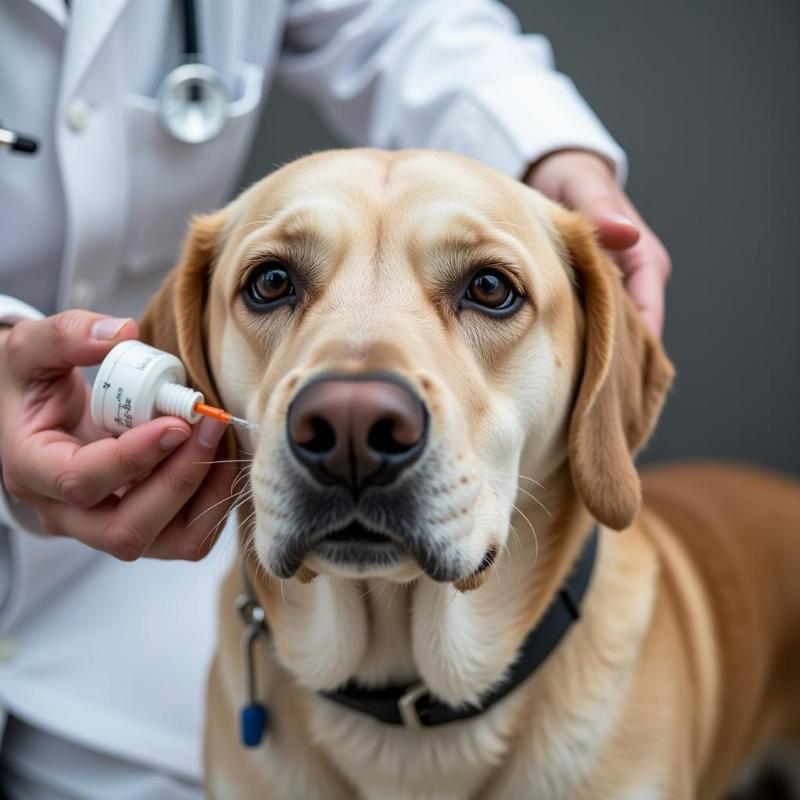Rear leg weakness in older dogs is a common concern for pet owners across the US. Seeing your furry friend struggle to walk, jump, or even stand can be heartbreaking. This article will explore the potential causes of old dog rear leg weakness, diagnostic approaches, treatment options, and supportive care strategies within the context of American veterinary practices and resources.
Understanding the Causes of Rear Leg Weakness in Senior Dogs
Several factors can contribute to rear leg weakness in senior dogs. Age-related degenerative conditions like arthritis, hip dysplasia, and intervertebral disc disease (IVDD) are common culprits. Other potential causes include muscle loss, nerve damage, infections, and even certain cancers. Determining the underlying cause is crucial for effective treatment.
Diagnosing the Problem: A Trip to the Vet
If your senior dog is exhibiting rear leg weakness, a visit to your American veterinarian is essential. The vet will conduct a thorough physical examination, review your dog’s medical history, and likely recommend diagnostic tests such as blood work, X-rays, or even an MRI. These tests can help pinpoint the exact cause of the weakness and rule out other potential health issues.
Treatment Options and Supportive Care
Treatment options for rear leg weakness vary depending on the underlying cause. For conditions like arthritis, pain management and anti-inflammatory medications are often prescribed.  Senior dog receiving arthritis treatment In cases of IVDD, surgery might be necessary to alleviate pressure on the spinal cord. Supportive care measures such as physical therapy, lift harness for senior dogs, and weight management can significantly improve your dog’s mobility and quality of life.
Senior dog receiving arthritis treatment In cases of IVDD, surgery might be necessary to alleviate pressure on the spinal cord. Supportive care measures such as physical therapy, lift harness for senior dogs, and weight management can significantly improve your dog’s mobility and quality of life.
Managing Pain and Discomfort
Managing pain is a crucial aspect of caring for a senior dog with rear leg weakness. Your vet can recommend appropriate pain medications and other pain management strategies like acupuncture or laser therapy. Providing a comfortable and supportive environment, including orthopedic beds and ramps, can also help ease your dog’s discomfort.
Home Care Strategies for Senior Dogs with Weak Hind Legs
What can you do at home to support your senior dog? Creating a safe and accessible environment is key. Remove tripping hazards, provide non-slip surfaces, and consider using ramps or steps to help your dog navigate furniture or stairs. Regular, low-impact exercise, as recommended by your vet, can help maintain muscle strength and flexibility.
When is Rear Leg Weakness an Emergency?
While gradual onset of rear leg weakness is often associated with age-related changes, sudden onset can be a sign of a more serious condition, such as a stroke or spinal cord injury. If your dog experiences sudden rear leg weakness, especially if accompanied by other symptoms like loss of bladder control or severe pain, seek immediate veterinary attention.
Conclusion
Rear leg weakness in older dogs can be a challenging but manageable condition. By working closely with your veterinarian, implementing appropriate treatment strategies, and providing supportive care at home, you can help your senior dog maintain mobility, comfort, and enjoy their golden years. Don’t hesitate to reach out to your vet if you have any concerns about your dog’s mobility or overall health.
FAQ
-
What are the most common causes of rear leg weakness in older dogs? Arthritis, hip dysplasia, and intervertebral disc disease (IVDD) are among the most frequent causes.
-
How can I tell if my dog’s rear leg weakness is serious? Sudden onset of weakness, especially if accompanied by other symptoms, warrants immediate veterinary attention.
-
What kind of home modifications can I make for my dog with weak hind legs? Ramps, non-slip surfaces, and removal of tripping hazards can create a safer environment.
-
Are there any supplements that can help with rear leg weakness? Consult your vet before giving your dog any supplements, as some can interact with medications.
-
What is the prognosis for a dog with rear leg weakness? The prognosis depends on the underlying cause and the individual dog’s response to treatment.
-
How can I keep my senior dog active with weak hind legs? Low-impact exercises like short walks and swimming can be beneficial, always consult your vet for recommendations.
-
What should I expect during a veterinary visit for rear leg weakness? Your vet will conduct a physical exam, review your dog’s history, and may recommend diagnostic tests.
Beautdogs.us is your premier destination for all things dog-related in the US. We offer expert advice on dog breeds, care, and products, catering to both new and experienced dog owners. Whether you’re looking for information on help em up harness for dogs or wheelchair for dogs back legs, we have you covered. Our comprehensive resources empower you to provide the best possible care for your canine companion. For expert advice and personalized support, contact us at [email protected] or call us at +1 501-555-7529. Beautdogs.us is dedicated to helping you and your furry friend live a happy and healthy life together.